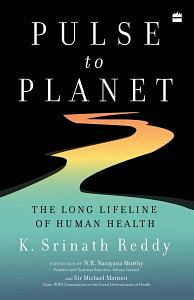Stress is a word heard quite often in present times, as an explanation for both physical and mental disorders or even for sub-optimal performance in studies or work. Whether it is a student feeling stressed by academic and examination pressures, an employee responding to unrealistic deadlines imposed by the supervisor, a commuter stuck in stalled or slow-moving traffic or a soldier suffering from post-traumatic stress disorder (PTSD), stress has many negative connotations. It conjures up the image of a hurried, harried and harassed person who is in harm’s way. Why is stress such a bad word? How does it harm the body, mind and soul? Is stress always undesirable? How does one avoid it or learn to cope with it? Hans Selye who coined the term ‘stress’ in 1936 defined it as ‘the non-specific response of the body to any demand for change’.
This sounds innocuous but why has it become sinister in its implications, being blamed for heart attacks to stomach ulcers and high blood pressure to diabetes? Stress is the collective term used to describe the sum total of the body’s responses to a challenging situation. The challenge may be physical, mental or emotional. As long as the stimulus is sufficient to challenge you or even threaten you in any way, the evoked response adds up to ‘stress’.
The ‘Stress Response’
To understand the basis of the stress response, one has to go back to the days of our ancestors (the hunter−gatherers of early human history). When the caveman ventured into the forest to be confronted by the beast, the choice was ‘fight or flight’. If he managed to hunt the prey, it would be his food. If the beast triumphed, the outcome of the encounter was the other way around.
Even if the visit was intended merely to gather fruit, the threats around meant one had to be on guard or ‘under stress’. Under those circumstances, stress was an essential survival mechanism. The response to these challenges produced increased activity of the sympathetic nervous system and adrenal glands. Adrenaline and steroid hormones poured into the bloodstream on a command from the brain and orchestrated a whole series of military manoeuvres. Adrenaline raised the pulse rate and blood pressure so that more blood would flow to the exercising muscles. The blood supply to the parts that were not actively engaged in combat or critical decisions was temporarily reduced. For example, blood supply was diverted from the stomach and intestines (‘butterflies in the stomach’ or ‘stomach cramps’) and the skin (‘cold skin’ or ‘cold clammy hands’).
The sweat glands were activated as the heat generated during muscular activity had to be quickly dissipated. The pupils dilated so that the gaze could take in the surroundings in a wide frame (‘where is the beast coming from?’). K. Srinath Reddy The surge of adrenaline and steroids broke down glucose stores and raised blood glucose levels so that the brain (which had to make life-saving decisions in a split second) and the muscles (which had to help in fighting or fleeing) were well supplied with their fuel. Since exercising muscles offered greater resistance to blood flow, blood pressure rose to overcome that resistance and supply the muscles with adequate blood-bearing oxygen and glucose.
Blood clotting tendency also increased to quickly seal off blood loss from any injury sustained during the fight or flight.
Also read:
Why Is it a Problem Now?
Obviously, the stress response was very useful for human survival under conditions of adversity. When did it turn into an undesirable thing? It happened when we were catapulted into modernity, which brought about vastly different conditions of living. First, the nature of threats changed. They are more often than not, threats to our selfesteem or our tranquillity than to our physical survival. Second, the originally intended outlet of fight or flight does not usually operate in current times. You cannot flee from class to escape the assault on your self-esteem mounted by a teacher’s unkind comments. Neither can an employee bash up the boss in retaliation for the hurt caused by harsh words or nasty behaviour.
Road rage too is rightly considered uncivilized behaviour. Anger mounts without physical release. So what happens is that the adrenaline and steroids do surge but the racing pulse, raised blood pressure, elevated blood sugar and thickening blood serve no ‘useful’ purpose as such. They only damage our bodies, like the engine of a stationary car gets overheated when the accelerator is pressed unnecessarily. The result is damage to blood vessels, heart attacks, paralytic strokes, diabetes and many more health hazards associated with modern living.
The problem is also that we suffer from chronic stress. While the acute stress response may have saved the lives of our ancestors, chronic stress due to repetitive daily threats (real and imaginary) wears our bodies down through a perpetual adrenaline whipping. Appetite is reduced and sleep is disturbed. The mind too is on the edge making us nervous, irritable, unable to concentrate and too ready to take offence. Is all stress bad? Not really. We do need some stress to help us perform better. If we do not see any challenges before us, we become inert and nonperforming. Some stress, therefore, is a positive stimulus and is creative.
The batsman in cricket, who has a ‘keen eye’ as he takes his guard and the student, whose ‘sharp mind’ is ready to rapidly retrieve stored information as the question paper is being handed out, are responding to that positive stimulus that challenges their self-esteem but prods them to peak performance. An acute stress response can also be lifesaving in the face of danger. Would you keep very ‘cool’ and saunter nonchalantly across a busy road as vehicles come speeding at you? On the other hand, excessive stress depletes reserves and leaves behind a drained body and distracted mind, which cannot respond to challenges adequately. This is just like a musical instrument with strings. If the strings are too lax, you cannot produce good music. If they are too taut, they do not resonate well either. You need just the right amount of tension in the wire to produce the best result. The right quantum of stress represents the ‘careful’ that is poised between ‘careless’ and ‘careworn’.
 This excerpt from K Srinath Reddy’s ‘Pulse to Planet: The Long Lifeline of Human Health’ has been published with permission from HarperCollins India.
This excerpt from K Srinath Reddy’s ‘Pulse to Planet: The Long Lifeline of Human Health’ has been published with permission from HarperCollins India.






